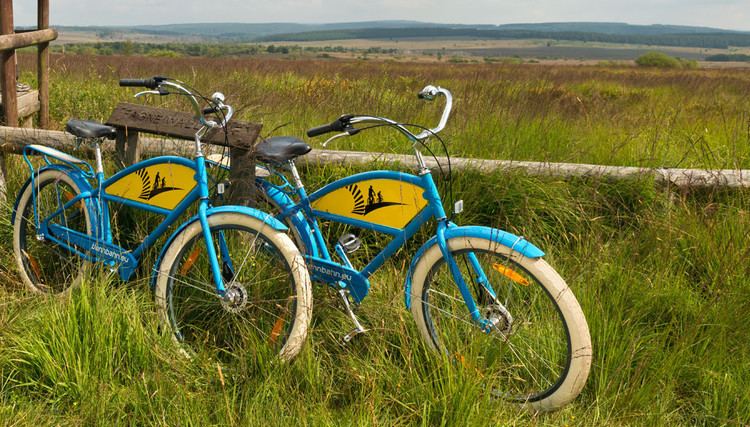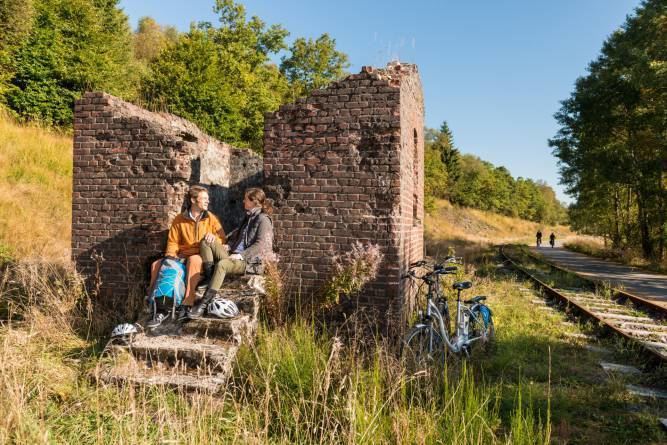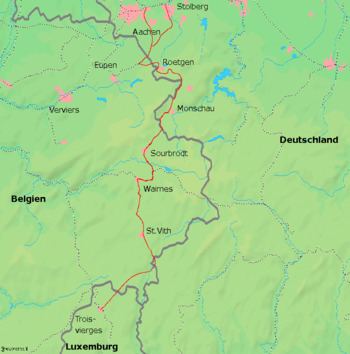 | ||
Die vennbahn www vennbahn eu der bahntrassenweg auf ber 125 kilometer
The Vennbahn ( [ˈfɛnbaːn], "Fen Railway") is a former railway line that was built partly across what was then German territory by the Prussian state railways. It is now entirely in Belgium, because the trackbed of the line, as well as the stations and other installations, were made provisional Belgian territory in 1919 (permanent in 1922) under an article of the Treaty of Versailles.
Contents
- Die vennbahn www vennbahn eu der bahntrassenweg auf ber 125 kilometer
- Cycling up and down the vennbahn cycling route in june 2015
- Route
- History
- Operation
- Enclaves and exclaves
- References

This had the effect of creating six small exclaves of Germany on the line's western side, of which five remain. The treaty (not the location of the trackbed, per se) also created one small Belgian counter-enclave, a traffic island inside a three-way German road intersection near Fringshaus.

Cycling up and down the vennbahn cycling route in june 2015
Route

The line, which was standard gauge, ran for some 75 kilometres (47 mi) across the High Fens (Hautes Fagnes, Hohes Venn) to the south of Aachen in a roughly southward direction from Eupen via Raeren (the site of the depot), Monschau (Montjoie) and Malmedy to Trois-Ponts, with a 20 km (12 mi) eastward branch from Oberweywertz to Bütgenbach and Losheim. At Eupen it connected with the line to Herbesthal where it joined the Brussels-Cologne main line. At Trois-Ponts it connected with the Liège-Luxembourg line.
History

The line was built to carry coal and iron. The section of the line from Aachen to Monschau was opened on 30 June 1885. The section from Raeren to Eupen was opened on 3 August 1887. The link to Walheim was opened on 21 December 1889.

On 18 May 1940 Adolf Hitler ordered that the area be re-annexed by the German Reich and the Vennbahn was "triumphantly" returned to service as a wholly German line on 2 June 1940. However, after the defeat of Germany in 1945, the pre-war situation was re-instated.
Operation

In latter years, until the end of 2001, the Vennbahn line operated tourist services, some of which were steam-hauled. These were withdrawn for want of funds to maintain the line. Part of the track between Kalterherberg and Sourbrodt is now used by railbikes.
It was reported in 2008 that, with the Vennbahn no longer operational, Belgium might have to return the land the line runs along on to Germany, which would result in the reunification of the exclaves with German territory. However, the foreign ministries of Germany and Belgium have since confirmed that the trackbed, even though disused, will stay as Belgian territory and that the German exclaves will therefore remain.
By December 4, 2007, the dismantling of the now disused line had started; by September 2008, the track had been completely removed between Trois-Ponts and Sourbrodt.
Enclaves and exclaves
Former Vennbahn Enclaves:
